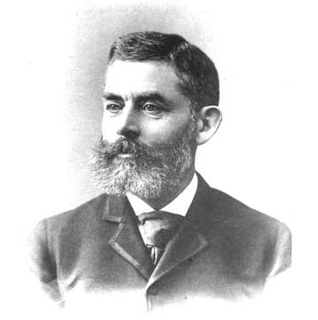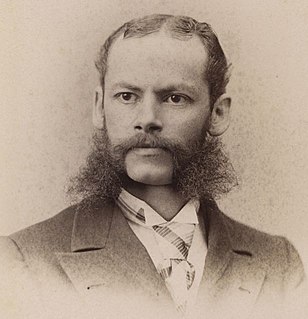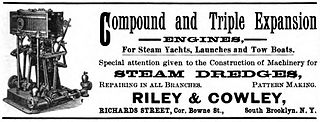History
William H. Hopkins, the inventor of the Standard Adding Machine, was a minister. When he moved to St. Louis in 1885 he served as chaplain and then pastor of St. Louis Second Christian Church. He continued to invent during those years and to find better ways to make an adding machine. In the 1890s, he left Second Christian Church and became assistant editor of the company that published The Christian Evangelist. William Hopkins filed his first patent on October 4, 1892. He registered the Hopkins Adding Machine Company in 1897, [6] and in 1899 his company changed name to Standard Adding Machine Company (Illinois company was bought off). [7] [8]
The Standard Adding Machine Company released the first 10-key adding machine in about 1900. [9] Hopkins' success led to competition. By 1915, other adding machine companies were vying for business. In 1916, Hopkins died, and his company began to decline.
Standard Adding Machine closed in 1921. In the decades since, the building housed businesses such as St. Louis Pump & Equipment Co., Lee Paper Co., and most recently, Harrison-Williams Store Fixtures. Vacant since 2003, the building was renovated in 2005 by Aquinas Institute of Theology.
This is a timeline of Polish history, comprising important legal and territorial changes and political events in Poland and its predecessor states. To read about the background to these events, see History of Poland. See also the list of Polish monarchs and list of prime ministers of Poland.
Prince of Wales was a transport ship in the First Fleet, assigned to transport convicts for the European colonisation of Australia. Accounts differ regarding her origins; she may have been built and launched in 1779 at Sidmouth, or in 1786 on the River Thames. Her First Fleet voyage commenced in 1787, with 47 female convicts aboard, and she arrived at Botany Bay in January 1788. On a difficult return voyage in 1788–1789 she became separated from her convoy and was found drifting helplessly off Rio de Janeiro with her crew incapacitated by scurvy.
This is a timeline of the history of the city of Gloucester, Massachusetts, USA.

The Northern Railroad was a U.S. railroad in central New Hampshire. Originally opened from Concord to West Lebanon in 1847, the Northern Railroad become part of the Boston and Maine system by 1890.

James Cephas Derby (1818–1892) was an American book publisher in New York state.

John Fowler Trow was a printer and publisher in New York City.
Phoenix was a merchant ship launched on the Thames in 1790. She made one voyage as an extra ship, for the British East India Company (EIC). Before that she had several masters and sailed under letters of marque. These authorized the vessel's master to engage in offensive action against the French, should the occasion arise, not just defend herself. After the voyage for the EIC Phoenix apparently traded as a West Indiaman until she was condemned in 1812.
The following is a timeline of the history of the municipality of Utrecht, Netherlands.
The following is a timeline of the history of the city of Matanzas, Cuba.
The following is a timeline of the history of the city of Guantánamo, Cuba.
Georgiana was launched in 1791. She served as a merchantman, packet ship for the British East India Company (EIC), a whaler, a warship of the navy of the United States of America, and a merchant vessel again. She was condemned in 1818 as leaky and sold.

Amelia Wilson was built in France under another name and captured by the British in 1809. Her new owners renamed her and she became a West Indiaman. She later became a whaler and was wrecked in 1833 on her fifth whaling voyage.
Pritzler was built in the United States and came to Great Britain in 1794, or slightly earlier. Between 1796 and 1798 she made a voyage as a whaling ship for Daniel Bennett & Son. She was lost in January 1798 as she was returning from this voyage.

The 111th Massachusetts General Court, consisting of the Massachusetts Senate and the Massachusetts House of Representatives, met in 1890 during the governorship of John Q. A. Brackett. Henry H. Sprague served as president of the Senate and William Emerson Barrett served as speaker of the House.

The 112th Massachusetts General Court, consisting of the Massachusetts Senate and the Massachusetts House of Representatives, met in 1891 during the governorship of William E. Russell. Henry H. Sprague served as president of the Senate and William Emerson Barrett served as speaker of the House.

The 120th Massachusetts General Court, consisting of the Massachusetts Senate and the Massachusetts House of Representatives, met in 1899 during the governorship of Roger Wolcott. George Edwin Smith served as president of the Senate and John L. Bates served as speaker of the House.

The 113th Massachusetts General Court, consisting of the Massachusetts Senate and the Massachusetts House of Representatives, met in 1892 during the governorship of William E. Russell. Alfred S. Pinkerton served as president of the Senate and William Emerson Barrett served as speaker of the House.

Riley & Cowley was an American marine engineering firm established in 1869 in Brooklyn, New York. The company specialized in the design and manufacture of marine steam engines for small watercraft such as steam yachts, launches and tugboats, and was particularly noted for its light and compact, high-performance, compound and triple expansion engines. The company also produced screw propellers, dredging machinery and other marine equipment.

Henry Middlebrook Crane was an American engineer and pioneer in the automobile industry. He was president of Crane Motor Car Company, vice-president and engineer of Crane-Simplex, and designed the Pontiac Six motor for General Motors. m
This page is based on this
Wikipedia article Text is available under the
CC BY-SA 4.0 license; additional terms may apply.
Images, videos and audio are available under their respective licenses.













